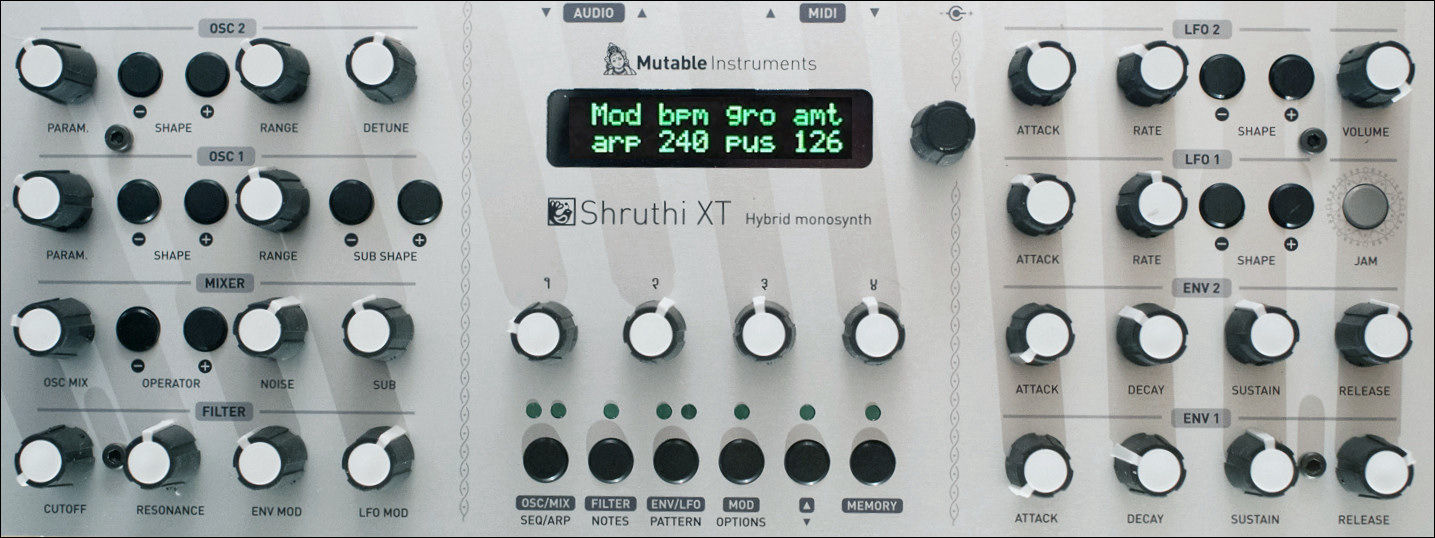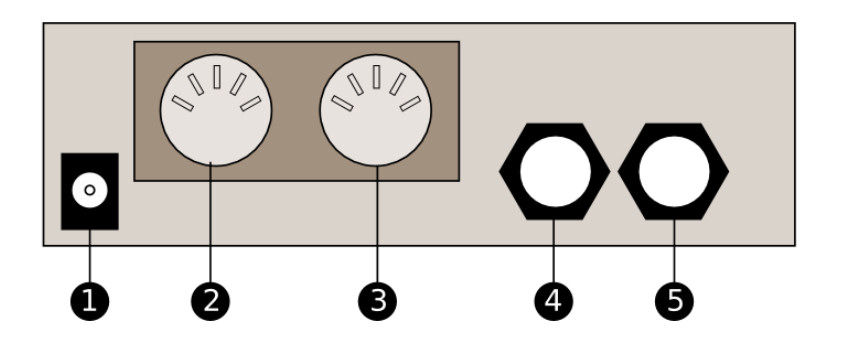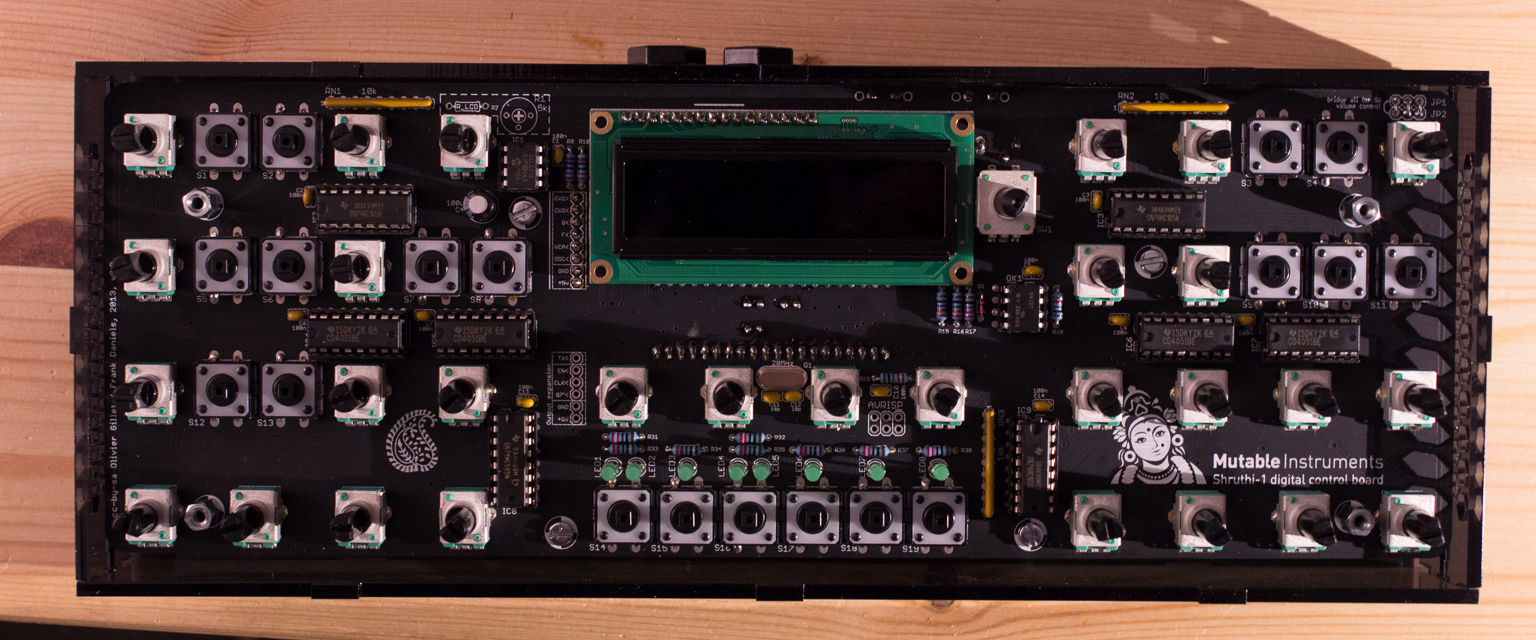SOUND An 8-bit microcontroller plays the role of the two main oscillators + sub-oscillator. This allows the generation of (aliasing-free) classic analog waveforms, but also wavetable/transwave synthesis and a trove of weird digital algorithms (sinewave bitcrushing, formant synthesis, phase distortion, bit toggling, XOR modulation).
MIDI complete MIDI implementation (large CC coverage, NRPNs, SysEx data dump including wavetable transfer)
MODULATION: a 12-slots modulation matrix
SEQUENCER: a 16-steps notes/CC sequencer and advanced arpeggiator with some unusual time warping modes, and even a
FILTER Most of the Shruthi-1s are built with the SMR-4 filter, a warm 4-poles “modern analogue” low-pass (no vintage IC).
But the filter section of the Shruthi is on its own board and can be replaced with alternative filters boards such as dual multimode filter with serial/parallel routing or even a clone of the aggressive
Polivoks filter.




 Mutable Instruments SHRUTHI XT
Mutable Instruments SHRUTHI XT
DISQUS COMMENTS WILL BE SHOWN ONLY WHEN YOUR SITE IS ONLINE